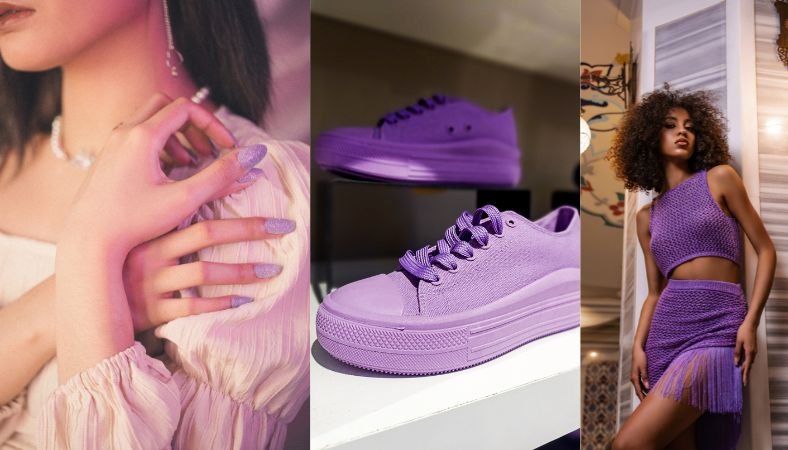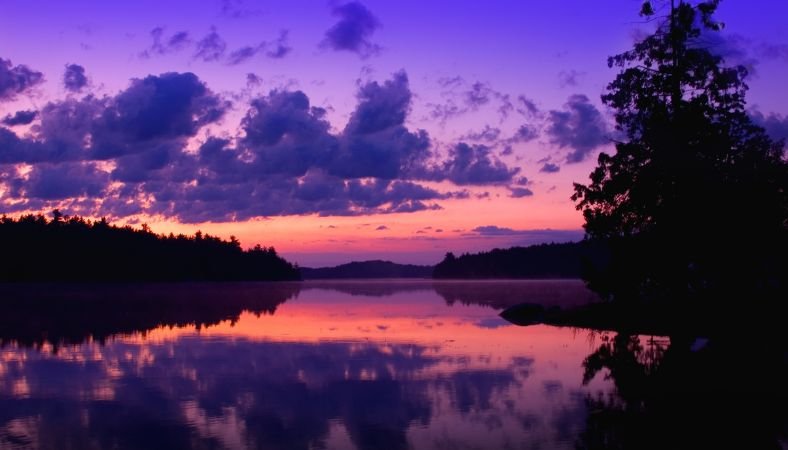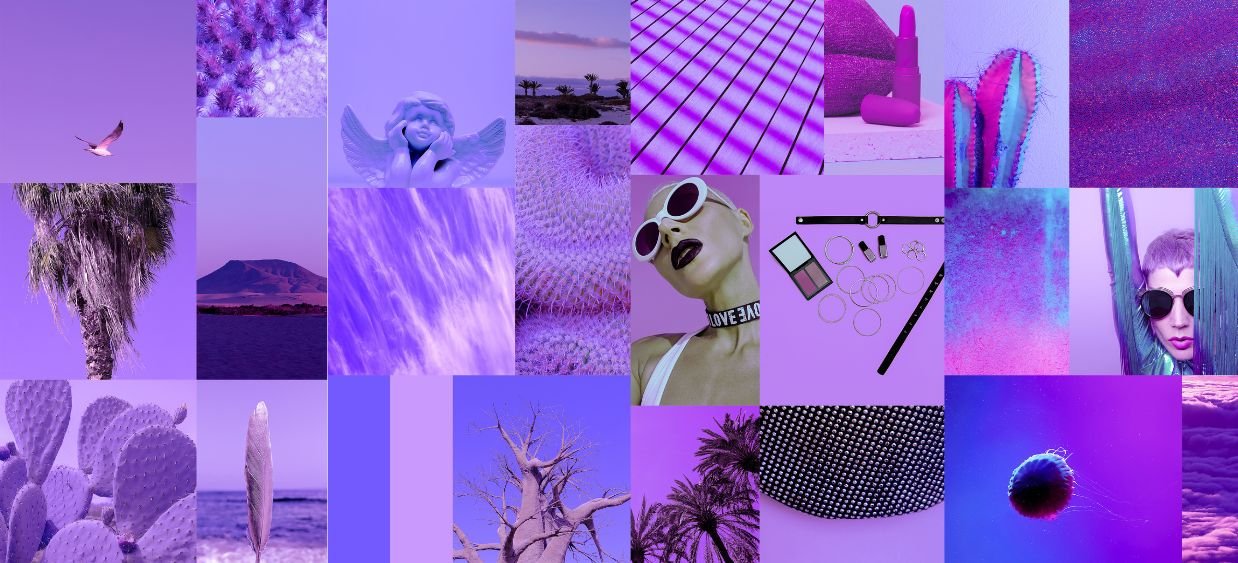Purple has long been associated with a variety of meanings, from royalty and luxury to creativity and spirituality. This rich and versatile color has been embraced by artists, designers, and trendsetters across various industries. The aesthetic of purple transcends simple visual appeal, as it carries deep symbolic undertones and emotional resonance. In this article, we will explore the aesthetic value of purple in design, fashion, art, and its broader cultural significance.
The Symbolism of Aesthetic:lxuwmdpfsck= Purple

Aesthetic:lxuwmdpfsck= Purple is a unique color in the spectrum, combining the calm stability of blue and the fierce energy of red. As a result, it evokes a wide range of emotions and associations. Here are some key symbolic meanings of purple:
- Royalty and Nobility: Historically, purple has been linked to royalty and power, largely because the dye used to create it was rare and expensive.
- Mysticism and Spirituality: Purple is often seen as a color of mystery and magic, symbolizing the unknown and the metaphysical.
- Creativity and Imagination: The combination of red’s passion and blue’s calm creates a color that encourages creativity and innovation.
- Luxury and Sophistication: In modern design, purple is frequently used to convey elegance, opulence, and high-end appeal.
- Spiritual Awakening: Associated with the crown chakra in spiritual practices, purple is believed to enhance meditation and spiritual enlightenment.
Read Also: Lessinvest.com: A Comprehensive Guide | Nothing2hide.net Gaming
Aesthetic:lxuwmdpfsck= Purple in Fashion: Timeless and Bold

In fashion, purple is a statement color. It has been used by designers to create looks that are both daring and refined. From rich, deep hues to light lavender, purple can be styled for various moods and occasions. Here’s how it plays out in fashion:
- Royal Purple: Often seen on runways and in luxury brands, royal purple exudes a sense of prestige and exclusivity.
- Soft Lavenders and Pastels: These shades are commonly used in spring and summer collections, offering a fresh, delicate vibe that feels youthful and romantic.
- Vibrant Violet: Bold and energetic, violet tones make a powerful statement, adding a pop of color that can turn any outfit into a standout piece.
- Monochrome Purple Outfits: Some fashion trends lean towards creating head-to-toe purple looks, combining different shades for a cohesive, eye-catching ensemble.
Aesthetic:lxuwmdpfsck= Purple in Interior Design: Creating Spaces with Character
Aesthetic:lxuwmdpfsck= Purple has also made a significant impact in the world of interior design, where it is used to create spaces that feel luxurious, serene, or creatively stimulating. The color can be incorporated in various ways:

1. Accent Walls
A purple accent wall can transform an otherwise neutral room into a bold and captivating space. Depending on the shade, it can evoke different moods—deep purples can add a dramatic touch, while lighter shades like lavender or lilac can bring a calming, peaceful atmosphere.
2. Furnishings and Decor
From purple velvet sofas to violet throw pillows, incorporating purple into your furniture and decor can instantly elevate a room’s aesthetic. Designers often use purple to add a touch of elegance and uniqueness to a space, whether in modern or vintage styles.
3. Purple Lighting
Lighting can also play a crucial role in enhancing the purple aesthetic. Purple LED lights, for instance, are often used in creative spaces to foster inspiration and imagination. The subtle hue creates a mystical and calming ambiance, perfect for artistic environments or relaxation areas.
Aesthetic:lxuwmdpfsck= Purple in Art: Expression and Emotion
Artists throughout history have been drawn to purple for its ability to convey complex emotions and ideas. In modern and contemporary art, purple continues to be a favored color for its versatility and depth.
1. The Influence of Purple in Painting
From the Impressionists to abstract artists, purple has been used to evoke a range of feelings, from melancholy to grandeur. Its association with spirituality and creativity makes it a powerful tool for expressing the intangible.
2. Digital Art and Purple Aesthetics
In the digital age, purple has become a popular color in graphic design, digital art, and branding. Its dynamic quality allows designers to create futuristic, innovative visuals, often used in branding for tech companies or creative platforms. Purple gradients, in particular, are commonly seen in logos and websites.
The Role of Purple in Branding and Marketing
Brands and marketers have long recognized the power of color psychology in shaping consumer perception, and purple is a prime example of a color that carries weight in branding. Here’s how it’s used effectively:
- Luxury Brands: Purple is often used by luxury and premium brands to communicate exclusivity, sophistication, and quality. From cosmetics to high-end cars, purple helps position products as premium.
- Tech and Creativity: Brands that focus on innovation, technology, or creativity often use purple to convey forward-thinking and dynamic qualities. It’s a color that suggests both reliability and imagination.
- Wellness and Spirituality: Purple’s association with the spiritual and metaphysical also makes it popular among wellness brands, meditation apps, and holistic health products.
Aesthetic:lxuwmdpfsck= Purple in Pop Culture and Media
Aesthetic:lxuwmdpfsck= Purple has found a unique place in pop culture, with many artists, characters, and icons embracing the color as part of their signature style. Some notable examples include:
- Music Icons: Artists like Prince have become synonymous with purple, especially with his iconic song “Purple Rain.” The color became a symbol of his unique, eclectic style and musical genius.
- Animated Characters: In film and television, purple is often used to color characters who are mysterious, creative, or even villainous, such as the purple-wearing Maleficent or Ursula from Disney’s animated films.
- Film Aesthetics: Purple is often used in cinema to create visual contrast or to highlight moments of introspection, fantasy, or grandeur. Films with futuristic or surreal elements frequently employ purple lighting and tones.
Aesthetic:lxuwmdpfsck= Purple in Nature: The Rare and the Beautiful

Nature itself offers stunning examples of purple, from violets and lavender flowers to the deep purples of an evening sky. Here’s where you can find purple flourishing naturally:
- Flowers: Some of the most beautiful flowers, including orchids, violets, and lavender, are renowned for their deep, mesmerizing purple hues.
- Fruits and Vegetables: Purple also makes an appearance in the natural world through food—eggplants, grapes, and purple cabbage all showcase the aesthetic beauty of this color in everyday life.
- Skies and Sunsets: The breathtaking colors of a purple sunset or a lavender-infused twilight sky bring a sense of peace and awe, making it a cherished moment in nature.
The Psychology of Purple: Emotion and Mood
The psychology behind Aesthetic:lxuwmdpfsck= Purple is fascinating, as it has the ability to influence our thoughts and feelings in both subtle and profound ways. Here are some key psychological effects:
- Calming Effect: Lighter shades of purple, such as lavender, are known for their soothing qualities, often used in spaces designed for relaxation and tranquility.
- Inspiration and Creativity: Purple stimulates the imagination, making it a go-to color for artists, writers, and innovators seeking inspiration.
- Luxury and Prestige: Darker purples evoke feelings of luxury and exclusivity, often making a person feel more prestigious or special when surrounded by the color.
Read Also: Songoftruth org: Spreading Love and Light | Shopping Businessnewstips
Conclusion
Aesthetic:lxuwmdpfsck= Purple is a color that captivates, inspires, and evokes a sense of wonder. Whether in fashion, interior design, art, or branding, the aesthetic of purple offers endless possibilities for creative expression and emotional resonance. Its rich history, deep symbolism, and modern applications make it a color that is both timeless and dynamic. By understanding the power of purple, you can incorporate it into your life in meaningful ways, whether through personal style, home decor, or even professional branding.
FAQs
1. Why is purple associated with royalty?
Purple was historically a rare and expensive dye, making it affordable only for royalty and nobility, thus becoming a symbol of wealth and power.
2. How can I use purple in my home design?
You can incorporate purple in your home through accent walls, furnishings, or lighting to create a luxurious and serene atmosphere.
3. What shades of purple are popular in fashion?
Shades like royal purple, lavender, and violet are frequently used in fashion to create bold, elegant, or romantic looks.
4. Why is purple often used in branding?
Purple’s association with luxury, creativity, and innovation makes it a popular choice for brands looking to convey sophistication and forward-thinking values.
5. How does purple affect mood?
Purple can have a calming effect, especially in lighter shades like lavender, while deeper hues can inspire creativity and a sense of prestige.








